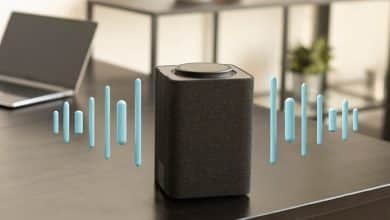
Technology has become an integral part of our daily lives in today’s fast-paced world. Smart home devices are among the most exciting innovations, which transform how we live, work, and interact with our surroundings. From voice-controlled assistants to automated lighting systems, smart home devices offer convenience, security, and energy efficiency like never before. In this article, we will explore the various types of smart home devices, their benefits, and how they are shaping the future of modern living.
What Are Smart Home Devices?
Smart home devices are electronic gadgets connected through a network, allowing users to control them remotely using smartphones, tablets, or voice commands. These devices work together to automate tasks around the house, making everyday life easier and more efficient. Whether it’s adjusting your thermostat, turning off lights, or monitoring your home security, smart devices make it all possible with just a few taps or voice prompts.
Some of the most common smart home devices include:
- Smart speakers and voice assistants (like Amazon Alexa, Google Assistant)
- Smart thermostats
- Smart lighting systems
- Smart plugs and switches
- Home security cameras
- Smart door locks
- Smart appliances like refrigerators and washing machines
Benefits of Smart Home Devices
- Convenience and Automation
The biggest advantage of smart home devices is convenience. Imagine waking up in the morning and having your coffee machine start brewing automatically, your thermostat adjusting to a comfortable temperature, and your favorite playlist starting to play as you get ready. Smart home devices can be programmed to perform daily routines, saving time and effort. - Energy Efficiency
Smart thermostats and lighting systems help reduce energy consumption by learning your habits and adjusting settings accordingly. For example, a smart thermostat can lower the temperature when you’re not at home, helping you save on energy bills. Similarly, smart lights can automatically turn off when a room is empty. - Enhanced Security
Home security has significantly improved with the introduction of smart devices. Smart cameras provide real-time surveillance, smart doorbells let you see and speak to visitors remotely, and smart locks offer keyless entry. You can monitor your home from anywhere in the world, giving you peace of mind whether you’re at work or on vacation. - Remote Control and Monitoring
One of the most attractive features of smart home devices is remote access. Through dedicated mobile apps, you can control and monitor all your connected devices from your smartphone. Forgot to turn off the lights or lock the door? No problem. A quick tap on your phone takes care of it. - Customization and Integration
Smart home devices can be customized to match your preferences. Many devices are compatible with each other and can be integrated into a central system, creating a seamless smart home ecosystem. You can create “scenes” or “routines” — like a “Good Night” scene that turns off all lights, locks the doors, and lowers the thermostat simultaneously.
Popular Smart Home Devices in 2025
As technology continues to evolve, smart home devices are becoming more advanced and affordable. Here are some of the most popular and innovative smart home devices of 2025:
- Smart Thermostats: Devices like the Nest Learning Thermostat and Ecobee SmartThermostat are leading the way with features like geofencing and voice control.
- Smart Security Systems: Brands like Ring and Arlo offer comprehensive home security solutions, including video doorbells, floodlight cameras, and motion sensors.
- Voice Assistants: Amazon Echo and Google Nest Hub are powerful smart speakers that control other smart home devices and provide useful information hands-free.
- Smart Lighting: Philips Hue and LIFX smart bulbs allow you to change colors, dim lights, and create schedules to enhance your home’s ambiance.
Future of Smart Home Technology
The future of smart home devices looks incredibly promising. With advancements in artificial intelligence (AI) and the Internet of Things (IoT), smart homes are becoming smarter and more intuitive. Devices are learning user behaviors and making proactive suggestions, such as adjusting lighting based on natural sunlight or reminding you to restock your groceries.
Moreover, the integration of renewable energy sources and smart grids will further enhance energy efficiency. Imagine a home that not only consumes less energy but also produces its own through solar panels and stores it in smart batteries.
Privacy and security are also improving, with manufacturers implementing stronger encryption and data protection measures to keep your personal information safe.
Conclusion
Smart home devices are no longer a luxury; they are quickly becoming a necessity in modern living. With their ability to simplify daily tasks, save energy, enhance security, and offer greater control, it’s no surprise that more homeowners are embracing smart technology. Whether you’re just starting with a smart speaker or fully automating your home, smart devices are an investment in comfort, safety, and efficiency.
If you haven’t yet explored the world of smart home technology, now is the perfect time to start. With endless possibilities and continuous advancements, smart home devices are paving the way for a smarter, more connected future.





